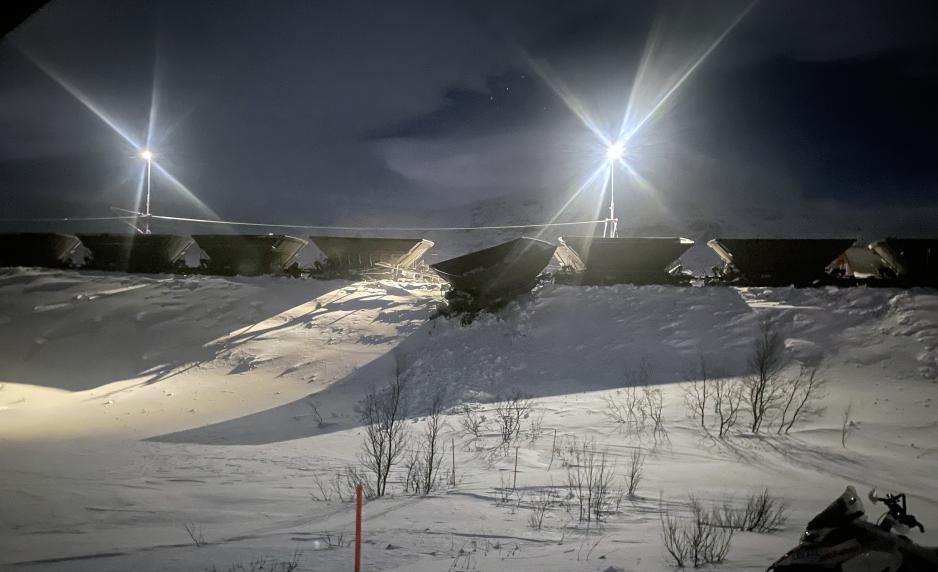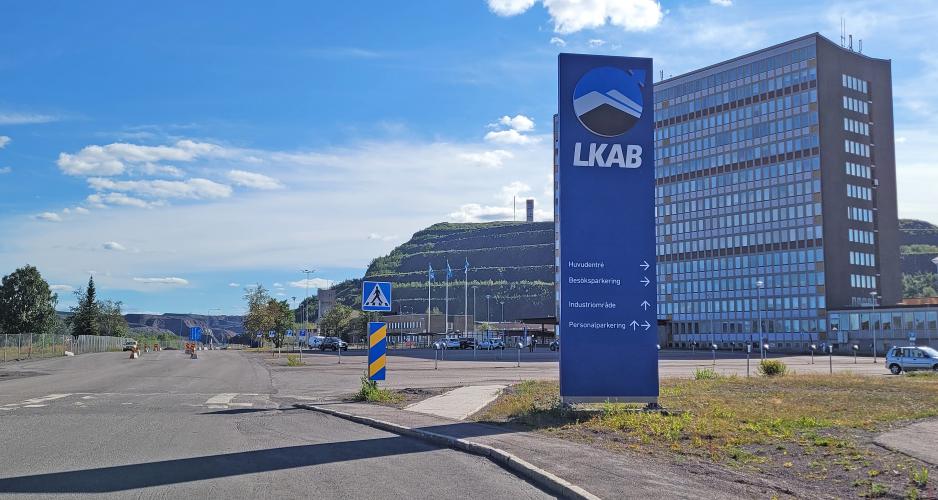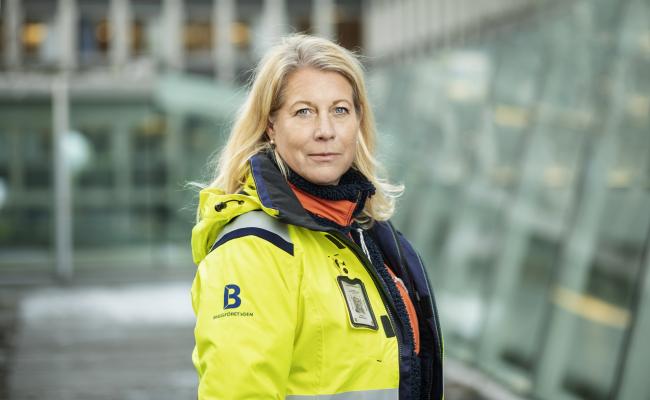Hard-Packed Snow on the Track Contributed to the Latest Iron Ore Line Derailment

Photo from the latest derailment on the Iron Ore Line. The incident occurred in February 2024 and followed a two-month-long halt in traffic as a result of a major derailment in December 2023. (Photo: the Swedish Transport Administration)
According to the Swedish Accident Investigation Authority, hard-packed snow on the track and under the wagons contributed to the derailment of the Iron Ore Line in Northern Sweden in February 2024.
The Swedish Accident Investigation Authority has published its final report on the derailment on the Iron Ore Line on February 24th, 2024.
The train, which had 62 empty iron ore wagons, was heading from Narvik to Kiruna in northern Sweden. There were no injuries, but damages to infrastructure and wagons were reported.
The case in short
- An unloaded ore train derailed on the Iron Ore Line in Northern Sweden in February 2024.
- The Swedish Accident Investigation Authority has now published its final report on the incident.
- The Accident Investigation Authority points out that the direct cause of the derailment was that wheel axles with low axle loads were lifted by hard-packed snow. As the train continued, lateral forces caused the wheel flanges to climb over the rails and derail.
- The railway line between Norway and Sweden in the north was impacted by two significant derailments last year.
Hard-packed snow on the track
According to the final report, hard-packed snow on the track and under the wagons was a direct cause of the derailment. The snow lifted wheel axles with low axle loads. As the train continued, lateral forces caused the wheel flanges to climb over the rails and derail.
From the Norwegian-Swedish border and into the Swedish side, there was a strong south-easterly wind when the incident occurred, writes the Accident Investigation Authority about the course of events.
The air temperature was above zero, while the ground was below freezing. The wind moved wet snow, which became packed and froze on the ground.
The train had to wait outside Vassijaure for almost an hour because of maintenance work at the station. The driver stopped the train inside two snow galleries, where it was largely protected. During the wait, the driver made several short movements of the train. Because of a hole in the wall of one of the snow galleries, together with the strong wind, it became possible for snow to drift in and become packed on the track underneath the wagons, writes the Accident Investigation Authority.
As the train continued, the packed snow lifted some wheels and wagons off the rails. The track was in a curve and lateral forces caused the wheel flanges to simultaneously climb over the inner rail and derail. The derailed axles and wagons rolled with the train for 1.2 kilometers into Vassijaure station before the derailment worsened, and the train was forced to a stop.

The transport of iron ore products from the mines in Northern Sweden is crucial for the Swedish mining company LKAB. (Photo: Arne O. Holm / High North News)
Two derailments
The incident in question was the second of two derailments that occurred over a short period on the railway line stretching between Narvik in Northern Norway and Luleå in Northern Sweden.
The first derailment occurred at the end of 2023 and led to a stop in traffic for about two months.
The last derailment occurred shortly after the railway line opened in February. Swedish police announced shortly afterward that they had opened an investigation into the incident.
As High North News reported, the Swedish Accident Investigation Authority recently published a preliminary status report from the first incident in 2023. It found that a damaged wheel may have contributed to the train derailment.
A likely contributor is a crack on the back of the wheel flange. The cause of this is still under investigation, the commission said. The final report on the incident is expected in March 2025.
Safety recommendations
The Accident Investigation Authority is making several safety recommendations to the Swedish Transport Administration regarding the last derailment in February 2024.
These include reviewing rules and procedures for the construction and maintenance of snow galleries (snow covers) to protect the track against the formation of snow drifts.
It is also recommended that the Swedish Transport Administration cooperate with the relevant railway companies operating on the Iron Ore Line. This includes continuing work to assess how procedures can be developed to reduce the risk of derailment of trains with low axle loads caused by snowdrifts.
An important railway stretch
The Iron Ore Line, or the Ofoten Line as it is called in Norway, is a railway line that runs between Norway and Sweden in the North.
The railway is used mainly by the Swedish mining company LKAB, which conducts iron ore extraction in Norrbotten.
The line is also critical in transporting consumer goods, seafood, and other freight and passenger traffic.
Usually, 10-12 of LKAB's iron ore trains run in each direction per day between Narvik and Kiruna.
LKAB's iron ore from Northern Sweden is shipped to European customers from the ports of Narvik and Luleå.
LKAB and other operators have long highlighted the Iron Ore Line's deficiencies and expressed a wish for a double track on the railway line.




